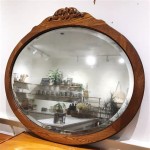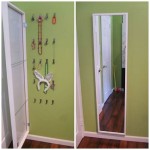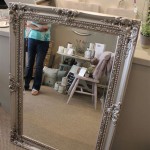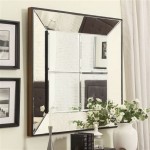How to Mirror iPhone to Sony TV Without Internet
Mirroring an iPhone screen to a Sony TV without an internet connection offers several advantages. This method bypasses the need for Wi-Fi or a stable internet connection, making it ideal for environments with limited or no internet access. It can also be faster and more reliable than internet-dependent methods, providing a smoother mirroring experience for activities like presentations, gaming, or watching downloaded content.
1. Using a Lightning Digital AV Adapter and HDMI Cable
This is the most common and reliable method for mirroring an iPhone to a Sony TV without internet. The Lightning Digital AV Adapter connects directly to the iPhone's Lightning port. An HDMI cable then connects the adapter to an available HDMI port on the Sony TV.
Users need to ensure they have the correct Lightning Digital AV Adapter for their iPhone model. Authentic Apple adapters are recommended for optimal performance. Once both cables are connected, switch the TV input to the corresponding HDMI port. The iPhone screen should automatically mirror on the TV. If not, a prompt may appear on the iPhone asking permission to trust the connected device.
2. Utilizing Apple TV with Peer-to-Peer AirPlay
While Apple TV typically relies on a Wi-Fi network, it also supports peer-to-peer AirPlay. This feature allows direct connection between an iPhone and Apple TV without needing an existing Wi-Fi network. This method enables users to create a localized, temporary Wi-Fi network specifically for screen mirroring.
To use this, ensure both the iPhone and Apple TV have Wi-Fi and Bluetooth enabled. On the iPhone, open the Control Center and tap the Screen Mirroring icon. Select the Apple TV from the list of available devices. A code may appear on the TV screen; users should enter this code on their iPhone to establish the connection.
3. Employing Third-Party Hardware Dongles
Various third-party hardware dongles offer screen mirroring capabilities similar to Apple’s Digital AV Adapter. These dongles often connect to the TV via HDMI and create a local Wi-Fi network that the iPhone can connect to for screen mirroring. Some dongles may utilize other wireless technologies like Miracast.
When using these dongles, users should carefully follow the manufacturer's instructions for setup and connection. The process generally involves connecting the dongle to the TV's HDMI port, powering the dongle, and connecting the iPhone to the dongle's Wi-Fi network through the phone's Wi-Fi settings.
4. Leveraging DLNA Compatible Media Servers
DLNA (Digital Living Network Alliance) technology facilitates media sharing between devices. By utilizing a DLNA-compatible app on the iPhone and ensuring the Sony TV also supports DLNA, users can stream locally stored photos, videos, and music to the television. This isn't true screen mirroring, but it offers a way to view content on the larger screen without an internet connection.
Several DLNA server apps are available for iPhones. Once the app is set up and the media library is configured, users can access it from the DLNA client on their Sony TV. If the TV doesn't have a built-in DLNA client, a separate DLNA-compatible media player connected to the TV might be required.
5. Connecting through a Hardwired Connection to TV's USB Port (Limited Functionality)
Some Sony TVs offer limited functionality through a direct USB connection. While this doesn't technically mirror the entire iPhone screen, it often allows for displaying photos and videos stored on the device. This method relies on the TV's ability to read media files directly from a connected USB device.
To attempt this, connect the iPhone to the TV's USB port using a USB cable. The TV may automatically recognize the iPhone as a storage device or offer a menu option to access connected USB devices. Functionality can be limited, and not all file types may be supported.
6. Considering Adapters for Older iPhone Models with 30-Pin Connectors
For older iPhones with 30-pin connectors, a different adapter is required. Apple produced a 30-pin to VGA adapter that can connect to a TV with a VGA input. A separate audio cable may be necessary for sound, as VGA doesn't transmit audio.
Similar to the Lightning Digital AV Adapter, connect the 30-pin adapter to the iPhone and then connect a VGA cable from the adapter to the TV's VGA input. Connect an audio cable if necessary and switch the TV input to the corresponding VGA source.
7. Exploring Wireless Display Adapters Supporting AirPlay
Certain wireless display adapters provide compatibility with AirPlay, offering a wireless alternative to the wired HDMI connection. These adapters typically connect to the TV's HDMI port and create their own Wi-Fi network, allowing the iPhone to connect via AirPlay without requiring an existing Wi-Fi infrastructure or Apple TV.
Users should confirm the adapter’s compatibility with their specific iPhone model and iOS version. Setting up usually involves plugging the adapter into the TV, connecting to its Wi-Fi network from the iPhone's Wi-Fi settings, and then initiating screen mirroring through the Control Center.

Simple Ways To Mirror Iphone Tv Without Wifi 6 Steps

Simple Ways To Mirror Iphone Tv Without Wifi 6 Steps

How To Mirror Iphone Tv Without Apple

How To Screen Mirror Iphone Sony Tv Best Ideas In 2024

2024 Tutorial How To Use Airplay Apple Tv Without Wifi

2024 Tutorial How To Use Airplay Apple Tv Without Wifi

Screen Mirroring Iphone How To Mirror Tv Without Wifi 2024

2024 Tutorial How To Use Airplay Apple Tv Without Wifi

How To Mirror Iphone Tv Without Wi Fi

Screen Mirroring Iphone To Sony Tv 2024 Guide Free App








